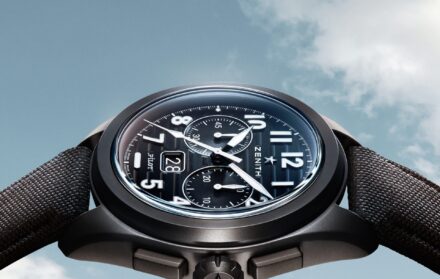The best chronograph watches to buy in 2024
What are chronograph watches – and why are they among the most prized timepieces on the market? We dive deep into this coveted complication
It’s the second decade of the 21st century, as you may have noticed, meaning that the primary purpose of chronograph watches – to measure periods of elapsed time from your wrist – has been obsolete for, let’s see, about half a century – give or take. Originally developed as a way of betting on horses, then timing motorcar races, then ensuring pilots didn’t run out of fuel, then getting astronauts safely back to earth, the analogue chronograph should have gone the way of the Betamax around the time the Beatles were imploding over Let It Be. Except, the chronograph did no such thing.
Instead, during the previous half-century, the chronograph has evolved from trusty tool watch into the most ubiquitous of complications. The first watch on the moon was, for obvious reasons, a chronograph. The most coveted watch on the planet today – the Rolex Daytona – is a chronograph. The most expensive series-produced watch ever sold – also a Rolex Daytona – is, you guessed it, a chronograph.
What is a chronograph watch?
Chronographs are watches equipped with a stopwatch function. They are typically characterised by pushers at two and four o’clock – one for stopping a seconds hand, the other for resetting it (although you can do both through the crown of some models) – and sub-dials on their face. Chronograph watches can measure elapsed seconds, minutes and, occasionally, hours. The most accurate chronographs are able to measure time to thousandths of a second.
In addition to standard chronographs, ‘flyback’ chronographs reset the chronograph seconds hand to zero with the push of a single button; while ‘split seconds’ (or ‘rattrapante’) chronographs feature two additional seconds hands, one of which can be stopped as the other continues to sweep around the dial.
Despite its ubiquitousness within the modern collections of watch manufacturers, the chronograph remains a tricky complication to execute. Until recently, very few brands could sincerely claim the ability to manufacture their own chronograph movements completely in-house. Even Rolex relied on movements from Zenith for its fêted Daytonas until 2000.
A condensed history of the chronograph
Longines is credited with creating the first chronograph-equipped wristwatch in 1913, two years before Breitling released a stopwatch with a central seconds hand and a 30-minute counter. It was Breitling, again, that would standardise the modern chronograph format when it added a second pusher at four o'clock (to the one already at two o’clock) in 1934.
Heuer introduced the first rotating tachymeter bezel in 1958, before a trilogy of brands – Heuer, Breitling and Hamilton – developed the first automatic chronograph in 1969. In that same year, Zenith, the other leading name in the chronograph story, came out with the El Primero. Beating at an industry-leading 36,000 vibrations per hour, the movement powered the first high-frequency, or ‘high-beat’, chronograph – the only wristwatch capable of measuring elapsed time to a tenth of a second.
Looking for a cult chronograph to channel your inner Steve McQueen and Paul Newman? In the race for supremacy, these are the stopwatches vying for pole position...
Breitling Navitimer B01 Chronograph 41
Breitling’s association with aviation began in the 1930s when the company began producing on-board chronographs for aircraft cockpits. During the Second World War, Breitling became the go-to brand for the Royal Airforce, equipping its Spitfire and Hurricane fighter planes with dashboard clocks. Seven years after the end of the war, the company launched the watch that would come to define it: the Navitimer.
More than 70 years later, the Navitimer exists as a cult chronograph and a design classic – it is also the oldest mechanical chronograph still in production. While modern-day models remain true to original design codes, they now feature sapphire crystal case-backs, water-resistant cases and movements manufactured in-house. An iconic chronograph, and one of the most iconic watches, full stop.
Zenith CHRONOMASTER ORIGINAL
There are plenty of lionised watches, but very few hallowed movements. Zenith’s El Primero is, perhaps, the most revered. While Zenith lost out in the race to bring to market the first automatic chronograph – it was beaten, in 1969, by a matter of months by a joint effort from Breitling, Hamilton and Heuer – the El Primero succeeded in fulfilling its primary function more effectively: it could measure periods of elapsed time far more accurately.
The automatic chronographs from Breitling, Hamilton and Heuer relied on a stopwatch movement bolted onto a base module. Zenith’s El Primero was a brand new calibre, which beat at 36,000 vibrations per hour (compared to Breitling et al’s 24,000 vph). The result was a wristwatch that could measure intervals of time to tenths of a second. The modern-day Chronomaster Original shares the same case size of Zenith’s earliest automatic chronographs (38mm) and ticks to the same high-frequency beat.
Tag Heuer Carrera
Few brands have fed the cult of the chronograph as much as Tag Heuer (or Heuer, as the company was named prior to 1985). Along with Breitling and Hamilton, Heuer was the first brand to bring to market an automatic chronograph movement in 1969. Two years later, the brand’s square-faced Monaco started its journey to design classic when it was worn on the wrist of Steve McQueen in 1971’s Le Mans.
In 2023, Tag Heuer’s other iconic chronograph, the Carrera, turned 60. The brand marked the occasion with a slew of new models, including this blue-on-blue stainless steel number. The watch features a rounder sapphire crystal dome than previous models, magnifying the tachymeter scale and providing extra depth to the watch. There are also more pronounced pushers and an oscillating weight that will now wind the watch in two directions, rather than one.
Omega SPEEDMASTER MOONWATCH
The most expensive chronograph – and most expensive series-produced watch – ever sold at auction was a Rolex Daytona owned by the American actor and racing driver, Paul Newman. It sold at Phillips New York in 2019 for $17.7 million (approx. £14 million). Things might be different if someone could locate the Omega Speedmaster that Buzz Aldrin wore on his wrist during the 1969 moon landings. Aldrin posted the watch to the Smithsonian museum, but it never turned up. Its whereabouts remain unknown.
The popularity of ‘Speedies’ – and prices on the pre-owned market – have been steadily increasing in recent years, but most models remain far more affordable – and physically attainable – than Rolex Daytonas. Last year, Omega fine-tuned a hairspring device to come up with something called the Spirate System. Watches equipped with the mechanism, including some limited-edition Speedmasters, can now be guaranteed to an accuracy of between 0 and +2 seconds per day. The feat provides Omega with bragging rights over its main market rival, which can only promise precision rates of between -2 and +2 seconds a day. Take that, Rolex.
Rolex Cosmograph Daytona
Between 1963 and 1969, it is estimated that Rolex only made between 2,000 and 3,000 ‘exotic’ dial Daytonas – simply because no one wanted them. Distinguished by their four-digit reference numbers and more detailed sub-dial markings – and made popular by the American actor Paul Newman, who wore one gifted to him by his wife for decades – today exotic Daytonas can fetch millions of pounds at auction.
In 1962, Rolex became the official timekeeper of Florida’s Daytona International Speedway. A year later, the chronograph Cosmograph Reference 6239 was nicknamed the ‘Daytona’. There have been four series to date. The first featured a hand-wound movement; the second introduced a self-winding movement (from Zenith); the third was the first to house a Rolex-made calibre; while the fourth was released in 2023 and characterised by a brawnier crown guard, marginally larger lugs and slightly smaller subdials. The platinum version became the first Daytona to feature an exhibition caseback.
Longines Conquest
One of the first manufacturers to bring the various stages of watchmaking under one roof, Longines produced its first chronograph movement in 1878. It powered a pocket watch that featured a mono-pusher crown – meaning that its stopwatch function could be started, stopped and reset with the push of just one button. In 1913, Longines became the first brand to integrate a chronograph into a wristwatch. The complication has remained a pillar of the brand ever since.
Spec-wise, Longines’ panda-dial Conquest collection, which celebrates its 70th anniversary in 2024, punches far above its price point. For less than £4,000, you get an automatic movement, ceramic bezel, exhibition caseback and a 59-hour power reserve. Plus, the cachet of owning one of history’s most storied chronographs.






